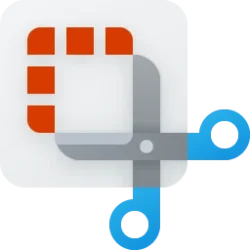Navigation
Install the app
How to install the app on iOS
Follow along with the video below to see how to install our site as a web app on your home screen.
Note: This feature may not be available in some browsers.
More options
Style variation
-
Disable Automatic Windows Updates in Windows 11
This tutorial will show you how to disable Windows Update from automatically downloading and installing updates in Windows 10 and Windows 11.- Brink
- Replies: 17
-
Use ViVeTool to Enable or Disable Hidden Features in Windows 11
This tutorial will show you how to use ViVeTool to enable or disable hidden features in Windows 10 and Windows 11.- Brink
- Replies: 49
-
Restore Classic File Explorer with Ribbon in Windows 11
This tutorial will show you how to restore the classic File Explorer with Ribbon for your account or all users in Windows 11.- Brink
- Replies: 422
-
Create Windows 11 Bootable USB Installation Media
This tutorial will show you how to create a bootable USB flash drive used to install Windows 11 with UEFI support.- Brink
- Replies: 135
-
Uninstall or Reinstall Copilot app
This tutorial will show you different ways to uninstall or reinstall the Copilot app for your account or all users in Windows 10 and Windows 11.- Brink
- Replies: 0
-
Add or Remove "Learn about this picture" Desktop icon
This tutorial will show you how to add or remove the "Learn about this picture" desktop icon when using Windows Spotlight as your desktop background for your account in Windows 11 and Windows 10.- Brink
- Replies: 27
-
Use SFC to Repair System Files in Windows 11
This tutorial will show you how to run the System File Checker (SFC) tool to repair missing, corrupted, and modified system files in Windows 10 and Windows 11.- Brink
- Replies: 25
-
Download Official Windows 11 ISO file from Microsoft
This tutorial will show you how to download an official Windows Server ISO or Windows 11 64-bit or ARM64 ISO file from Microsoft.- Brink
- Replies: 430
-
Repair Install Windows 11 with an In-place Upgrade
This tutorial will show you how to do a repair install of Windows 11 by performing an in-place upgrade without losing anything.- Brink
- Replies: 339
-
Clean Install Windows 11
This tutorial will show you step by step on how to clean install Windows 11 at boot on your PC with or without an Internet connection and setup with a local account or Microsoft account.- Brink
- Replies: 245
You are using an out of date browser. It may not display this or other websites correctly.
You should upgrade or use an alternative browser.
You should upgrade or use an alternative browser.
Tutorials
Windows 11 tutorials, tricks, tips, and guides.
This tutorial will show you how to open the Emoji Panel in Windows 11.
An emoji is a pictogram, logogram, ideogram or smiley embedded in text.
Windows 11 includes 3D Fluent emoji you can use from the Emoji Panel.
Starting with Windows 11 build 22631.3810, Microsoft is adding support for Emoji 15.1. Windows supports Unicode symbol-like shapes for family groupings. But Windows will keep using people for them. Also, you can choose the right or left facing direction for some people emoji.
Starting with Windows 11 build 22635.5015 (Beta 23H2), Microsoft is trying out a new experience to improve the discoverability of the emoji and more panel in Windows 11 with the introduction of a new system tray icon on the taskbar. With this new...
This tutorial will show you how to clear and reset the thumbnail cache for your account in Windows 10 and Windows 11.
Windows keeps a copy of all your picture, video, and document thumbnails in a cache so they can be reused to quickly display when you open a folder instead of having to manually scan and slowly load them each time.
The thumbnail cache can sometimes become corrupted causing thumbnails to display incorrectly or distorted. When this happens, the thumbnail cache needs to be deleted to reset it and automatically recreate as needed.
The thumbnail cache .db files for each user is located in the hidden folder below.
%LocalAppData%\Microsoft\Windows\Explorer
(C:\Users\{user-name}\AppData\Local\Microsoft\Windows\Explorer)...
This tutorial will show you how to open an elevated command prompt at boot in Windows 11.
The Command shell is an entry point for typing commands in the Command Prompt console window. By typing commands at the command prompt, you can perform tasks on your computer without using the Windows GUI.
If you are troubleshooting or unable to open a command prompt from within Windows 11, you can open a command prompt at boot to use instead.
Option One: Open Command Prompt at Boot using Windows 11 Installation Media
Option Two: Open Command Prompt at Boot from Advanced Startup
Open Command Prompt at Boot using Windows 11 Installation Media
1 Boot from your Windows 11 installation USB, or ISO file if in a virtual machine.
2 Do step 3...
This tutorial will show you how to add or remove the Details tab from file properties for all users in Windows 10 and Windows 11.
You can right click on a file and click/tap on Properties to see a Details tab.
The Details tab allows you to see metadata information about the file.
You must be signed in as an administrator to add or remove the Details tab from file properties.
EXAMPLE: Details tab in file Properties
Here's How:
1 Do step 2 (add) or step 3 (remove) below for what you would like to do.
Add Details tab in File Properties for All Users
This is the default setting
A) Click/tap on the Download button below to download the file below, and go to step 4 below.
Add_Details_tab_to_Properties_for_all_users.reg...
This tutorial will show you how to kill a process in Windows 11.
A process is an instance of an app or task that is being executed. Each process running in Windows is assigned a unique decimal number called the process ID, or PID.
If you notice a running process is reducing your computer's performance because it's hung, not responding, using a high percentage of CPU and/or memory resources, then you can kill the process to end it.
Tip:
https://techcommunity.microsoft.com/blog/itopstalkblog/identify-which-process-is-blocking-a-file-in-windows/4432635
Option One: Kill Process in Task Manager Processes Tab
Option Two: Kill Process in Task Manager Details Tab
Option Three: Kill Process using taskkill Command
Option Four: Kill Process...
This tutorial will show you different ways to maximize an open window for your account in Windows 11.
You can maximize a window in Windows 11 to "fit to screen" or "fill the screen" with the window.
When the window is maximized, you can restore it back to its original size and position when wanted.
Option One: Maximize Window using Keyboard Shortcut
Option Two: Maximize Window using Double Click
Option Three: Maximize Window using Drag to Top
Option Four: Maximize Window using Maximize Caption Button
Option Five: Maximize Window using Title Bar Menu
Option Six: Maximize Window using Taskbar Menu
Option Seven: Maximize Window from Taskbar Thumbnail Preview
Option Eight: Maximize Window from Task Manager
Maximize Window using...
This tutorial will show you how to enable or disable Show extracted files when complete from a ZIP by default for your account in Windows 10 and Windows 11.
Zipped (compressed) files take up less storage space and can be transferred to other computers more quickly than uncompressed files. In Windows, you work with zipped files and folders in the same way that you work with uncompressed files and folders. Combine several files into a single zipped folder to more easily share a group of files.
When you Extract all files from a ZIP, the files will be extracted to the selected folder. By default, it will also open this folder in File Explorer to show the extracted files when complete.
If wanted, you can set to have Show extracted files...
This tutorial will show you how to enable or disable media controls from Google Chrome, Microsoft Edge, and/or Mozilla Firefox for your account in Windows 11.
The Media controls OSD (On Screen Display) appears in Quick Settings (Win+A) and on the Lock screen (Win+L) when playing media (ex: music or video) in a supported app (ex: Chrome, Edge, or Firefox).
The Hardware Media Key Handling flag in Google Chrome, Microsoft Edge, and/or Mozilla Firefox can enable or disable Media controls and media keys on the keyboard to control the active media session.
Starting with Windows 11 build 22631.4249 (23H2) and build 26100.1882 (24H2), Microsoft has updated the Lock screen so that the media controls will now show at the lower bottom center of...
This tutorial will show you how to restore items from the Recycle Bin for your account in Windows 11.
The Recycle Bin provides a safety net when deleting files or folders. When you delete any of these items from a drive, Windows places it in the Recycle Bin and the Recycle Bin icon changes from empty to full.
Removable drives, such as USB flash drives and memory cards, do not have a Recycle Bin by default. Files deleted from removable drives are permanently deleted since they do not go to the Recycle Bin. You can enable the Recycle Bin for removable drives to have deleted files from them go to the Recycle Bin instead.
If you deleted a file or folder to the Recycle Bin by mistake, you can restore that item to its original location or...
This tutorial will show you how to see what your system uptime is in Windows 10 and Windows 11.
The system uptime will show you how much time your system has been running since the last time the PC had been shutdown or restarted.
Uptime is often used as a measure of computer operating system reliability or stability, in that this time represents the time a computer can be left unattended without crashing, or needing to be rebooted for administrative or maintenance purposes.
If you have Fast Startup turned on, the up time will not always start over after a shut down.
Fast Startup will not affect a restart causing the up time to start over.
Option One: Find System Up Time in Task Manager
Option Two: Find System Up Time using...
This tutorial will show you how to enable or disable "Don't show this message again" on the msconfig confirmation message dialog for your account in Windows 10 and Windows 11.
System Configuration (msconfig) is a tool that can help find and identify issues that might prevent Windows from starting correctly.
When you make a settings change in msconfig and click on OK, you will be prompted by a restart confirmation message dialog with a Don't show this message again check box on it.
If you check the Don't show this message again box, you will no longer see the confirmation message dialog.
You can enable the msconfig confirmation message dialog again if wanted though.
Option One: Disable msconfig "Don't show this message again"...
Latest Tutorials
-
-
-
Browsers and Mail Create AI Generated Theme for Microsoft Edge in Windows 11
- Started by Brink
- Replies: 0
-
-
Network and Internet Change Preferred Band for Wi-Fi adapter in Windows 11
- Started by Brink
- Replies: 0
-
-
Browsers and Mail Enable or Disable Extensions from Other Stores in Microsoft Edge on Windows 11
- Started by Brink
- Replies: 0
-
-
-
Tutorial Tags
android
background
battery
bitlocker
bluetooth
boot
color
context menu
copilot
defender
desktop
display
drive
edge
file explorer
folder
hyper-v
icon
keyboard
location
mouse
notepad
notifications
onedrive
outlook
paint
pen
photos
pointer
power
printer
recall
screenshot
search
settings
share
shortcuts
sign-in
sound
start menu
store
taskbar
terminal
theme
touch
usb
voice
wi-fi
widgets
xbox




















